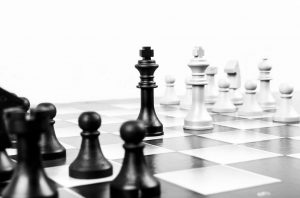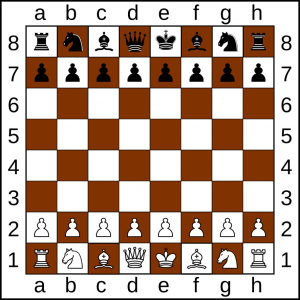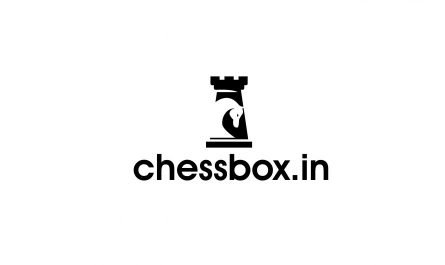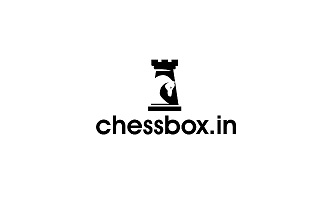Foreword
Chess rules cannot take into account all possible situations that may arise during the game, and do not cover all organizational issues. In cases that are not fully regulated by the Rules, decisions should be made on the basis of similar situations considered in the Rules. The rules are based on the fact that the arbitrators have the necessary competence, sufficient common sense and are absolutely objective. In addition, the detailed Rules would deprive the arbiter of his liberty in making a decision dictated by justice, logic and specific conditions. FIDE calls on all chess federations to accept this view. Any Federation has the right to introduce more detailed Rules, but they:
- must not contradict the official FIDE Chess Rules in any way;
- limited to the territory of this federation;
- Invalid for any FIDE match, championship, or qualifying competition for a FIDE title or rating tournament.

Rules of the game
The nature and goals of the game of chess
- A chess game is played between two partners who alternately move pieces on a square board called a “chessboard”. One who has white pieces begins the game. A player gains the right move when his partner makes a move.
- The goal of each player is to attack the partner’s king in such a way that the partner does not have any possible moves that avoid the “capture” of the king on the next move. The player who achieved this goal is said to have checkmated his partner’s king and won the game. The partner, whose king was checkmated, lost the game.
- If the position is such that none of the partners can checkmate, the game ends in a draw.
The starting position of the pieces on the chessboard
- A chessboard consists of 64 equal squares (8 × 8), alternately light (“white” fields) and dark (“black” fields). It is located between the players so that the nearest corner field to the right of the player is white.
- At the beginning of the game, one player has 16 bright pieces (“white”); the other – 16 dark pieces (“black”).
Symbol Figure Quantity
♔ White king 1
♕ White Queen 1
♖ White Rook 2
♗ White elephant 2
♘ White horse 2
♙ White pawn 8
♚ Black king 1
♛ Black Queen 1
♜ Black Rook 2
♝ Black elephant 2
♞ Black horse 2
♟ Black pawn 8
3. The starting position of the pieces on the chessboard is as follows:

- Eight vertical rows of squares are called “verticals”. Eight horizontal rows of squares are called “horizontal lines”. Straight lines of squares of the same color touching the corners are called “diagonals”.
Shape moves
None of the figures can be moved to a field occupied by a figure of the same color. If the piece moves to the field occupied by the partner’s piece, the last is considered to be taken and removed from the chessboard as part of the same move. The figure is said to be attacking the figure of the partner, if this figure can take on this field. A piece is considered to be an attacking field, even if it cannot go to it because its own king remains under the check or falls under it.
- A bishop can walk on any field on the diagonal on which it stands.
- A rook can walk to any field vertically or horizontally on which it stands.
- The queen moves to any field vertically, horizontally or diagonally on which he stands. When these moves are made, the queen, rook or bishop cannot move through the field occupied by another piece.
- A horse can go to one of the nearest fields from the one on which it stands, but not on the same vertical, horizontal or diagonal.
- A pawn can go forward to a free field located directly in front of it on the same vertical, or
from the starting position, the pawn can advance two fields along the same vertical line if both of these fields are not occupied;
the pawn walks onto the field occupied by the figure of the partner, which is located diagonally on an adjacent vertical, while taking this figure.
- A pawn attacking a field crossed by a pawn of a partner who advanced it from its original position into two fields at once can take this advanced pawn, as if its last move was only on one field. This capture can only be done in the next move and is called a “pass” capture.
- When a pawn reaches the farthest horizontal from its original position, it must be replaced by a queen, rook, bishop or knight of “its” color, which is part of the same move. The player’s choice is not limited to pieces that have already been removed from the board. This replacement of the pawn with another piece is called “transformation”, and the action of the new piece begins immediately.
- The king can move in two different ways:
- go to any adjacent field that is not attacked by one or more partner figures.
- “Castling”: This is the movement of the king and one of the rooks of the same color horizontally considered one move of the king and performed as follows: the king moves from his original field into two fields towards the rook, then the rook moves through the king to the last field just crossed the king.
- Castling becomes impossible:
- if the king has already walked, or
- with the rook that was already walking.
- Castling is temporarily impossible:
- if the field on which the king stands, or the field that he must cross, or the field that he must occupy, is attacked by one of the figures of the partner;
- if there is any piece between the king and the rook with which the castle should be castled.
- It is believed that the king is “under the check” if he is attacked by at least one piece of the partner, even if she cannot make the move because her own king remains under the check or falls under him. None of the pieces can make a move that puts or leaves his king under the check.
Game completion
- The game is won by the player who checkmates the partner’s king. If the checkmate is put in a possible move, then the game is considered complete.
- A party is considered to be won by a player if the partner has declared that he is giving up. In this case, the game ends immediately.
- A game is considered to have ended in a draw if that player, for whom the turn has no possible moves, and his king is not under check. They say about such a party that it ended with a “stalemate”. If a put is made by a possible move, then the game is considered completed.
- A game is considered to have ended in a draw if there is a position where none of the partners can mate the king with any possible moves. It is believed that the party ended in a “dead” position. In this case, the game ends immediately.
- The game is considered to be a draw by agreement between the two partners during the game. In this case, the game ends immediately.
- A game may end in a draw if the same position arises or has arisen on the chessboard three times.
- A game may end in a draw if the last 50 moves were made by players without moving pawns and without taking pieces.
Chess clock
- The term “Chess Clock” means a clock with two dials connected to each other so that only one of them can work at a given time. The term “Clock” in the Chess Rules means the indication of time on one of the two dials. The term “Drop flag” means the expiration of the time allotted to think about the moves, the player.
- When using a chess clock, each player must make the minimum set number of moves or all moves in a given period of time; and / or when using an electronic clock, a certain additional time may be added after each move. All this must be determined in advance.
- The time accumulated by the player in one period of the game is added to his time for the next period, except when the time for each move is set. When both players get to think about a certain main time, as well as a fixed extra time for each turn, the countdown of the main time starts only after a fixed time has elapsed. If a player switches his watch before the expiration of this fixed extra time, his main time does not change, regardless of the amount of extra time used.
- At the set start time of the game, the clock of the player who has white pieces starts.
- If none of the players is present at the beginning, then the player with white pieces is deducted all the time elapsed before his arrival, unless otherwise specified by the rules of the competition or decided by the referee.
- Any player arriving at the game more than one hour after the scheduled start of the round loses the game, unless otherwise specified by the rules of the competition or decided by the arbiter.
- During the game, the player, having made his move on the board, must stop his watch and start the partner’s watch. The player should always be able to stop his watch. His move is not considered complete until he has completed these requirements, except for the move ending the game. The time between the player making a move on the chessboard, stopping his own clock and starting the opponent’s clock is regarded as part of the time allotted to the player.
Profitability Analysis
Unless otherwise specified in advance, the player who won the game or won as a result of some violation of the partner receives one point (1), the player who lost receives zero points (0), and the player who draws receives half points (½).
Invite your friends to play on ChessBox.in and also enjoy a 100000+ chess games from the world champions.



